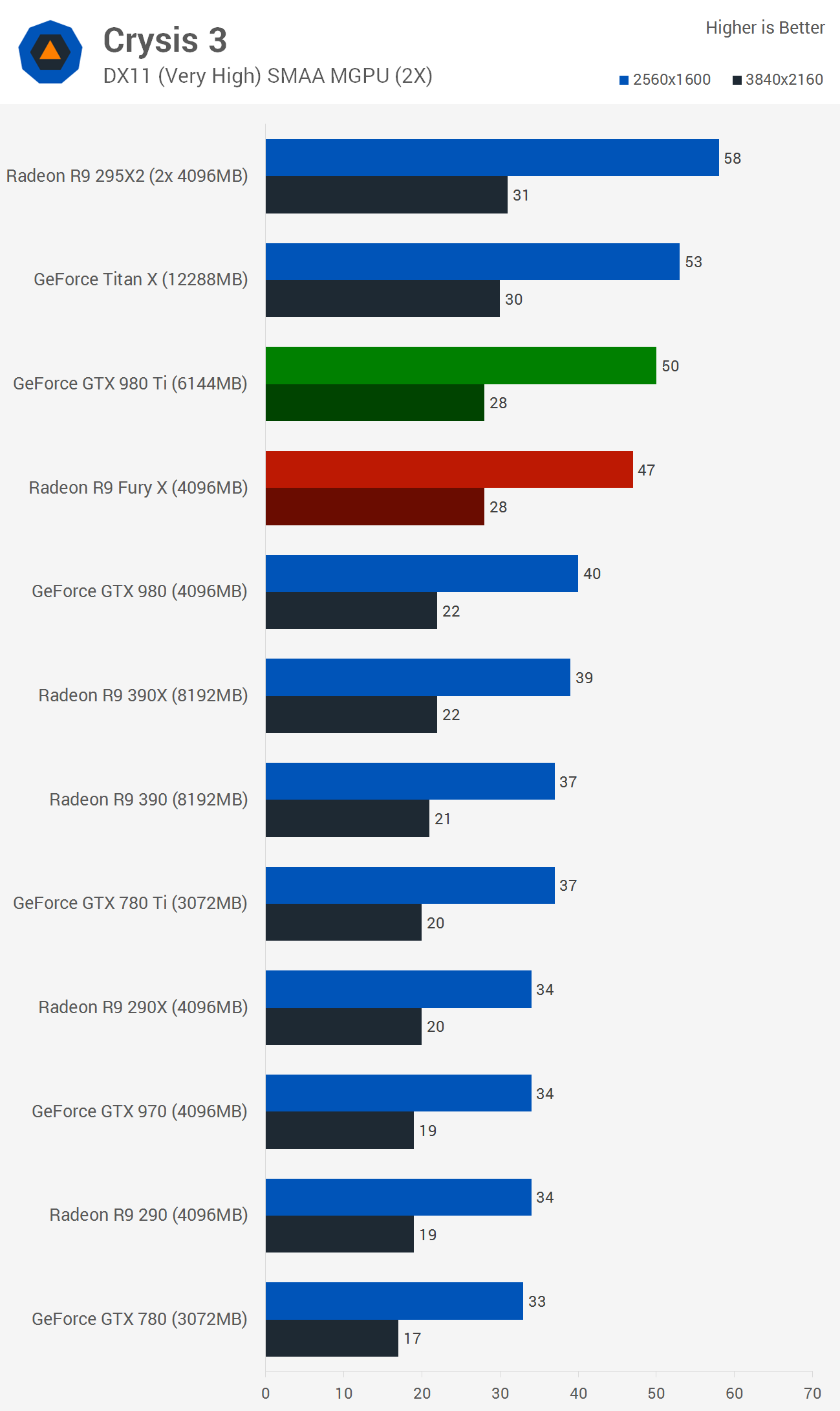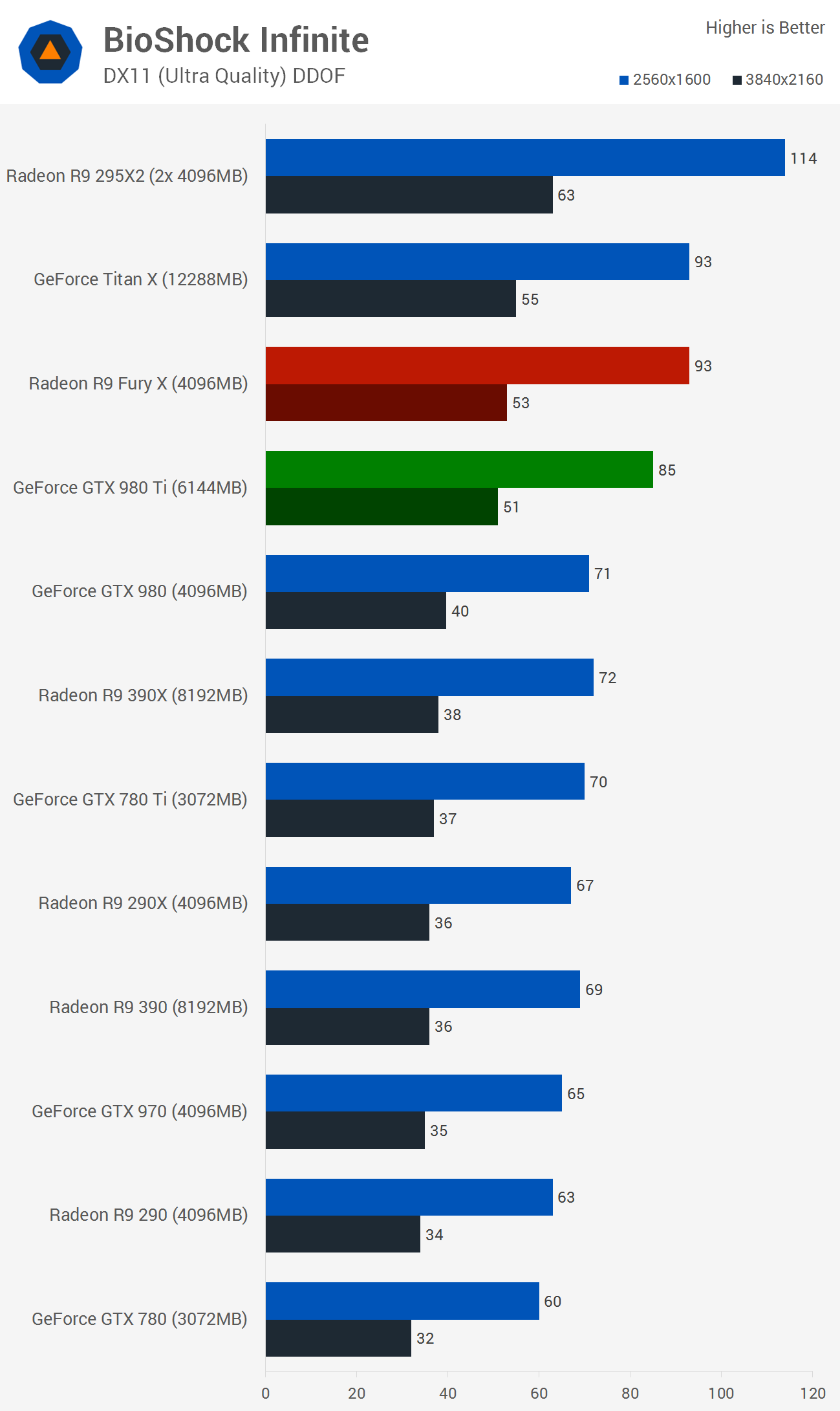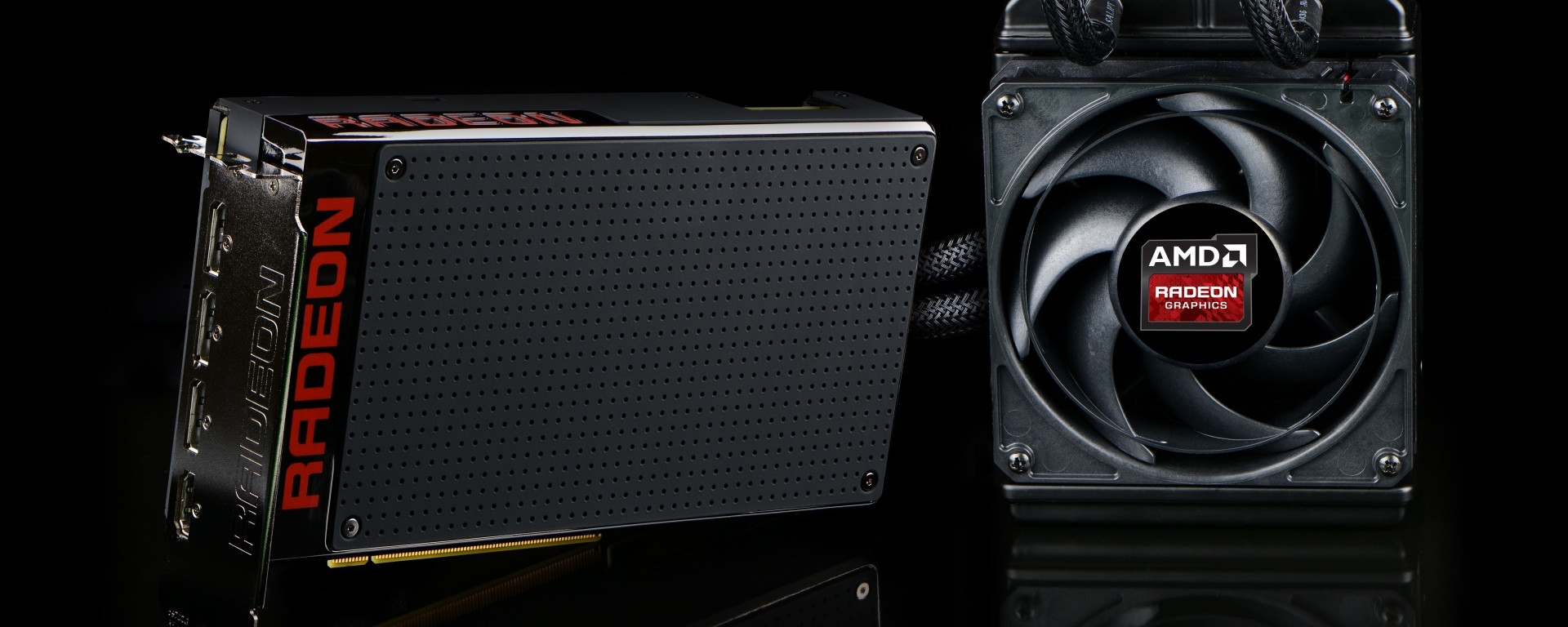Benchmarks: Crysis 3, BioShock
All GPUs have been tested at the 2560x1600 and 3840x2160 UHD 4K resolutions. Graphics cards were tested with core and memory clock speeds set to AMD and Nvidia's specifications.
- Intel Core i7-5960X (3.0GHz)
- x4 4GB Kingston Predator DDR4-2400 (CAS 12-13-13-24)
- Asrock X99 Extreme6 (Intel X99)
- Silverstone Strider Series (700w)
- Crucial MX200 1TB (SATA 6Gb/s)
- Nvidia GeForce Titan X (12288MB)
- Nvidia GeForce GTX 980 Ti (6144MB)
- Gainward GeForce GTX 980 (4096MB)
- Gainward GeForce GTX 970 (4096MB)
- Palit GeForce GTX 780 Ti (3072MB)
- Palit GeForce GTX 780 (3072MB)
- AMD Radeon R9 Fury X(4096MB)
- HIS Radeon R9 390X (8192MB)
- HIS Radeon R9 390 (8192MB)
- AMD Radeon R9 295X2 (2x 4096MB)
- Gigabyte Radeon R9 290X (4096MB)
- Gigabyte Radeon R9 290 (4096MB)
- Microsoft Windows 8.1 Pro 64-bit
- Nvidia GeForce 352.90
- AMD Catalyst 15.6 Beta
- AMD Catalyst 15.15 Beta (300 Series)

The R9 Fury X averaged 47fps at 1600p in Crysis 3, 6% slower than the GTX 980 Ti but 18% faster than the standard GTX 980 and 21% faster than the R9 390X. Jumping to 4K reduced the average frame rate to just 28fps. The Fury X wasn't able to match the performance of the GTX 980 Ti but it was 27% faster than both the R9 390X and GTX 980, not to mention just 10% slower than the R9 295X2.

The R9 Fury X came out swinging in BioShock Infinite with 93fps at 1600p, matching the Titan X while topping the GTX 980 Ti by 9% and the R9 390X by 29%. Moving to 4K sits the Fury X between the GTX 980 Ti and GTX Titan X with 53fps.
